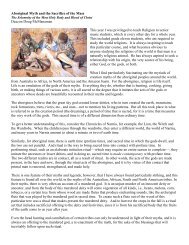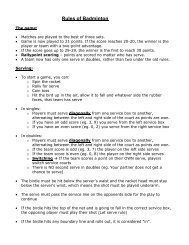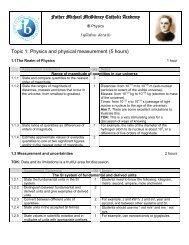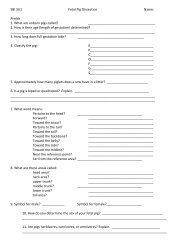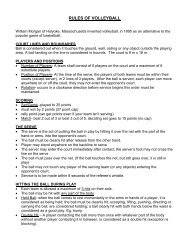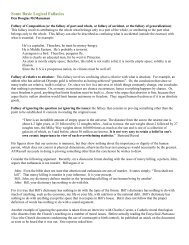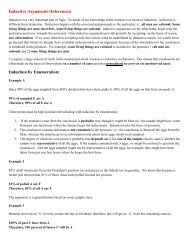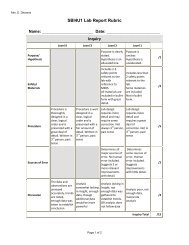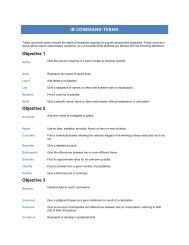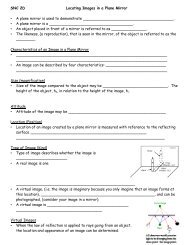DIffusion & Osmosis Lab
DIffusion & Osmosis Lab
DIffusion & Osmosis Lab
- No tags were found...
You also want an ePaper? Increase the reach of your titles
YUMPU automatically turns print PDFs into web optimized ePapers that Google loves.
oHas decimal points aligning down a column (if applicable) and numbers centered in the columnYou must also present your results in a GRAPH. [See attachment on webpage for using Excel to draw graphs]o Use the correct type of graph for the type of data you are presenting.o Graphs must be clear and easy to understand. Please avoid “creative” or “funny” coloring of graphs.o Graphs need to have appropriate scales, labeled axes with units, and accurately plotted data points.o Graphs are titled in sequential order as “Figure 1: title.” “Figure 2: title”o If necessary, add smooth lines or curves to show the overall trend of the data.o If a mean is calculated, only graph the mean, not all data points. When a mean is graphed, itsassociated standard deviation error bar must also be included (and labeled as such).o Legends (keys) are not always necessary. Delete “series 1” and “series 2” boxes from graphs createdin Excel.ANALYSIS OF RESULTS1. Explain the relationship between the change in mass and the concentration of corn syrup in the beaker.2. Was your group’s corn syrup solution hypotonic, hypertonic, or isotonic? Explain how you know.3. Why did you calculate the percent change in mass rather than simply using the change in mass?4. A dialysis bag is filled with distilled water and then placed in a sucrose solution. The bag's initial mass is 20 g, and itsfinal mass is 18 g. Calculate the percent change of mass, showing your calculations.5. What concentration of corn syrup would be the equilibrium point for the egg (isotonic)? Use your graph to interpolatethis point.



